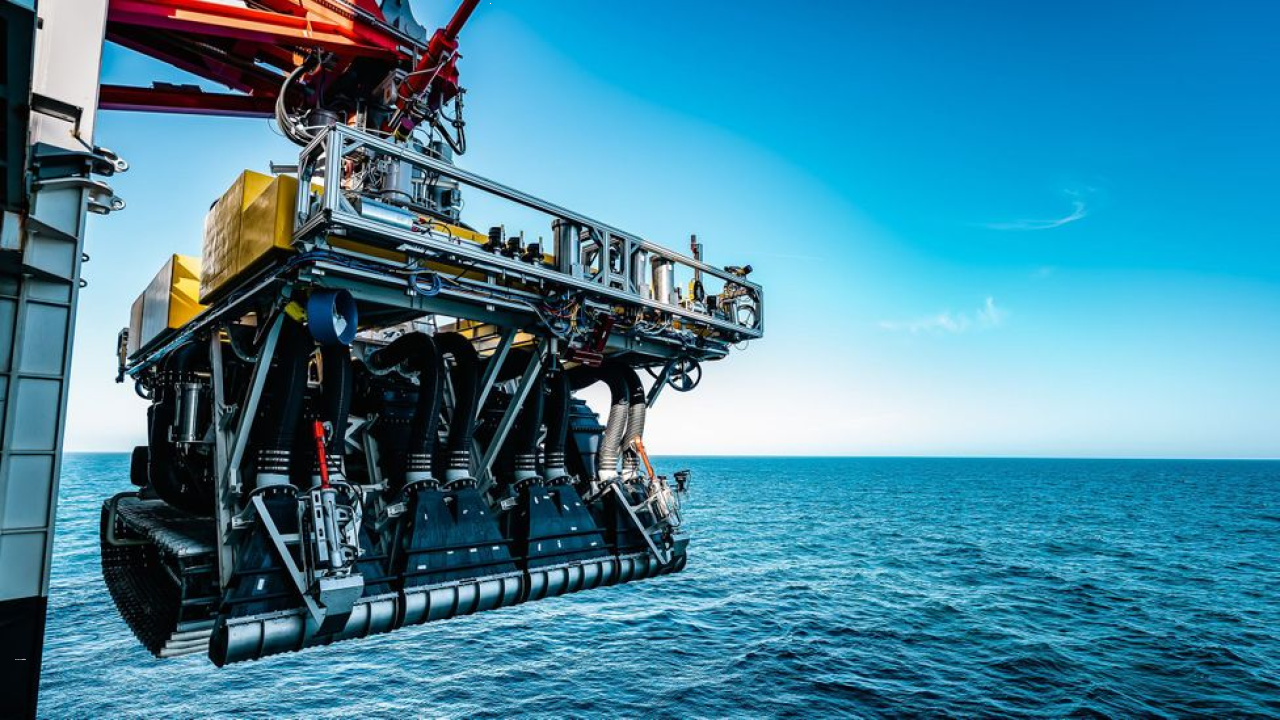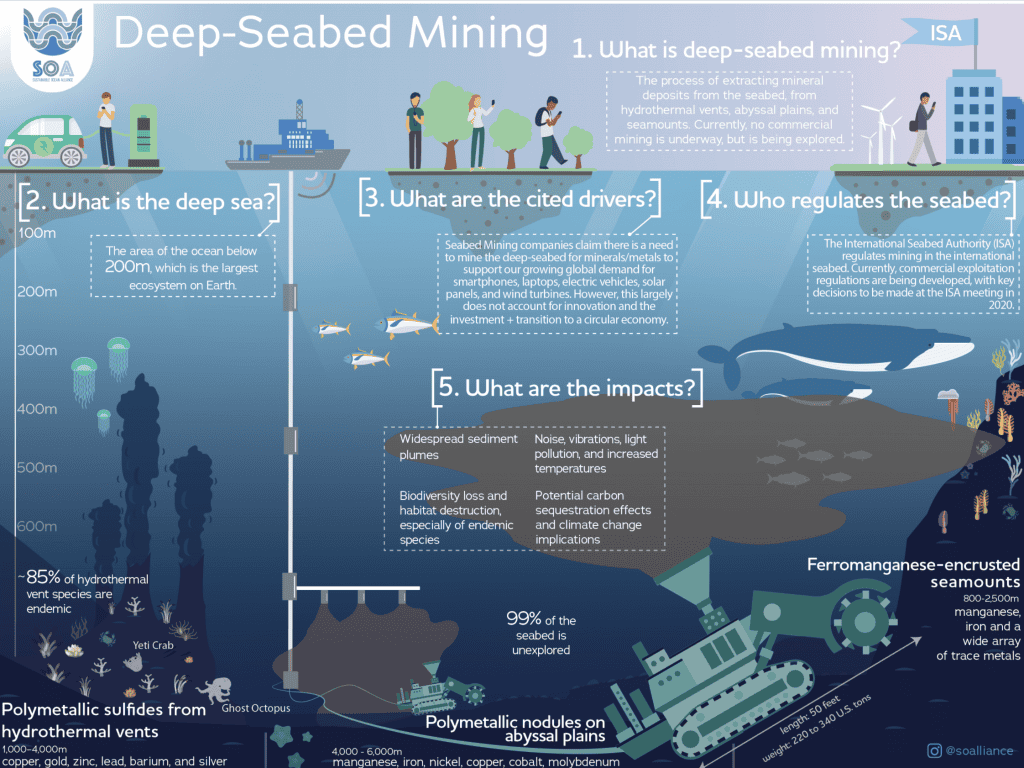A relatively nascent industry called deep sea mining has emerged as a potentially lucrative source of valuable minerals found in the depths of the world’s oceans.
While the promise of economic gains is appealing, it is imperative to assess and understand the environmental consequences associated with this activity. The potential impacts of deep-sea mining on the delicate marine ecosystem.
The International Seabed Authority (ISA), the United Nations body has been tasked with the attempts to resume negotiations to regulate ocean floor explorations and mining activities in the ‘international waters.’
It includes materials critical for the green energy transition that the world is so calling for.
Years-long negotiations have come to a critical point, especially when the much-demanded two-year period for the adoption of deep-sea mining codes expired by 9th July, resulting in the authority to soon begin accepting mining application permits.
However, how ISA will review the applications precisely remains unclear.
That could exacerbate the potential impact on scanty researched marine life and ecosystem.
Although deep-sea mining has been a contested issue in recent years, predominantly because of the vast availability of mineral sources in the sea bed.
What is deep-sea mining?
It is a process of extracting mineral deposits and metals from the ocean’s seabed, typically below 656 feet. Although there are three kinds of deep-sea mining, however, the commercial interest in deep-sea mining has significantly focused on polymetallic nodules.
These nodules, the potato-sized mineral concentrations contain a combination of metals including cobalt, nickel, manganese etc., which are essential for batteries, used in day-to-day technologies like computers and cell phones and are increasingly in demand in line with the global energy transition.
How are these activities regulated?
By and large countries across the globe have their own mechanism in place to govern their maritime territory and special economic zones. While the United Nations Convention of Laws of the Seas governs the issues of high seas and the international ocean floor.
Mining companies interested in the deep sea are increasingly partnering with several nations to help them get permits for exploration.
Environmental Concerns
Only a tiny part of the seabed has been explored yet and conservationists flag concerns associated with the potential damage to ecosystems caused by mining activities, especially in the absence of any environmental protocols.
One of the major concerns is the plumes of sediment created during mining operations that can smother organisms and disrupt the intricate web of life in the deep sea. Once the valuable material is extracted, sedimented plumes are often pumped back into the sea.
The ravaging impacts of such mining include carbon sequestration and nutrient cycling and have led to potential long-term consequences for the planet.
In addition, there is a potential risk of chemical pollution as the extraction and processing of minerals may release harmful substances and heavy metals into the water column.
Furthermore, mining involves removing the top layer of the ocean floor, which can lead to the destruction of critical habitats, such as hydrothermal vents and cold-water coral reefs.
Impacts don’t end here, even if the world has an environmental protocol in place for deep-sea mining, then too such activities do not come damage free.
The damage includes vibration, noise and light pollution. Along with the possible risk of leaks and spills of harmful liquids and chemicals used in the mining process.
Even though the full extent of implications for deep sea ecosystems remains unclear, nevertheless, conservationists and scientists have flagged their concerns over an inevitable loss of biodiversity and fear of it being irreversible.


